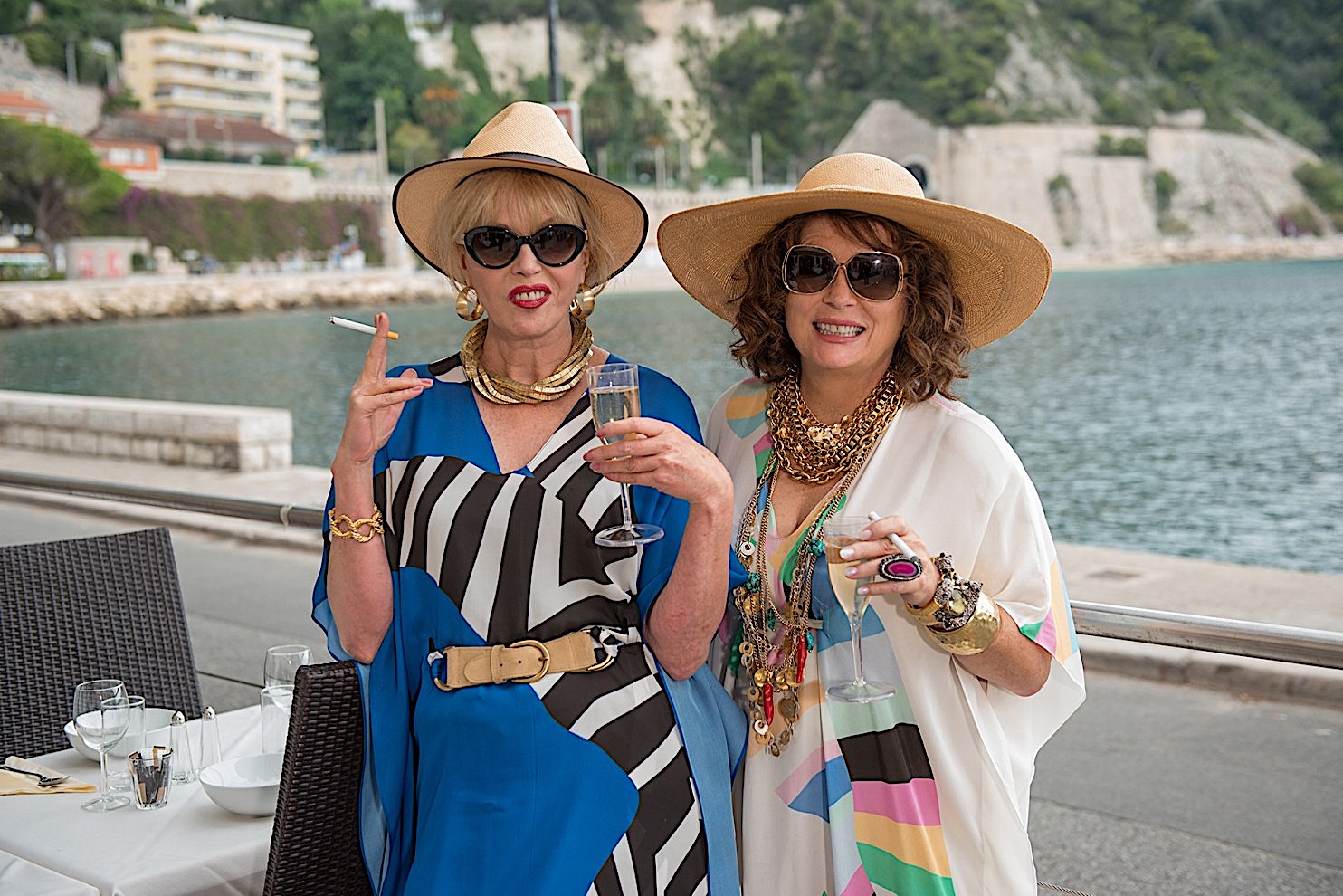
Joanna Lumley and Jennifer Saunders in "Absolutely Fabulous"
❖❖❖
IN THIS ISSUE
DINING AROUND THE LOIRE VALLEY
By Geoff Kalish
NEW YORK CORNER
PARMA NUOVA
By John Mariani
ANOTHER VERMEER
CHAPTER 39
By John Mariani
NOTES FROM THE WINE CELLAR
HUGH JOHNSON'S POCKET WINE BOOK 2023:
An Interview with the New Editor
By John Mariani
❖❖❖
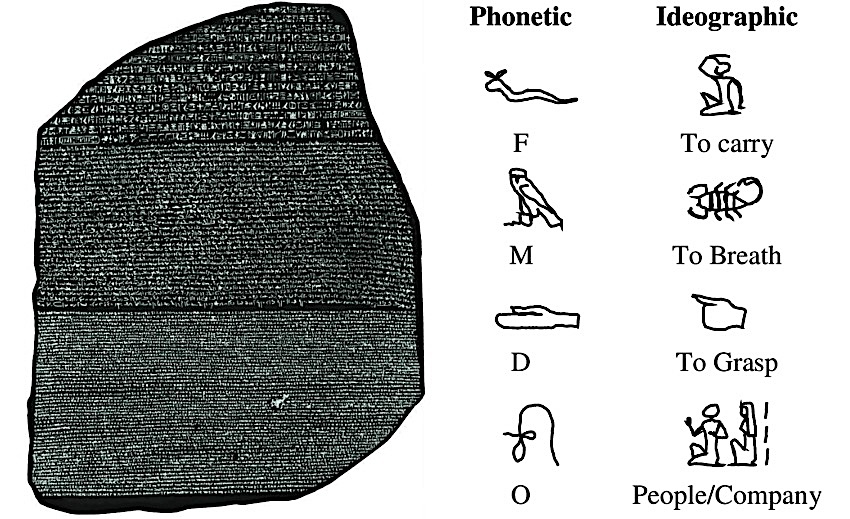 Professor of LINGUISTICS at Iona
University. Go to: WVOX.com.
The episode will also be archived at: almostgolden.
Professor of LINGUISTICS at Iona
University. Go to: WVOX.com.
The episode will also be archived at: almostgolden.
❖❖❖
DINING AROUND THE LOIRE VALLEY
By Geoff Kalish
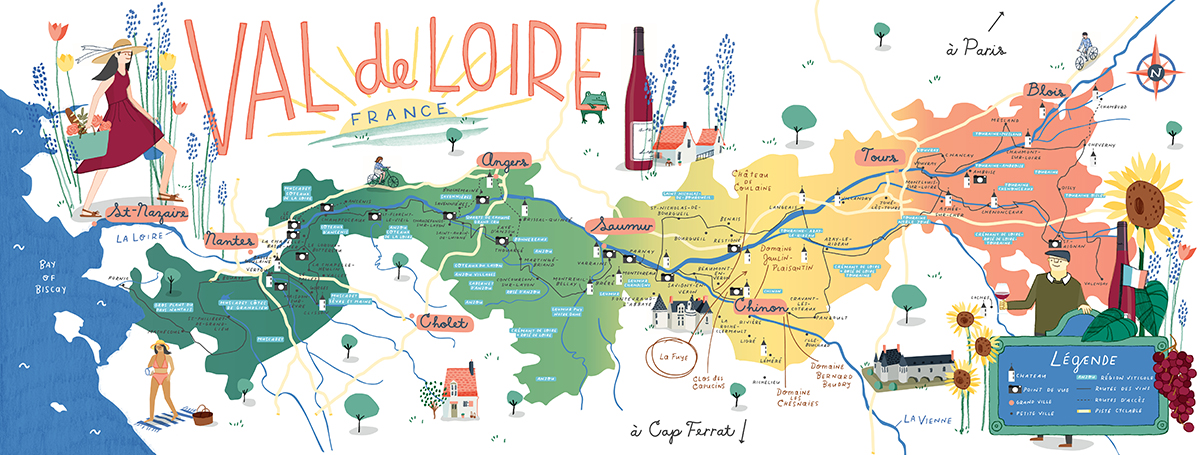
Located in the Loire Valley, about a 3-hour car ride southwest of Paris and only about 15 minutes from Tours, Domaine de La Tortinière sits within the commune of Veigné (just outside Montbazon) and, if you happen to be in the area (or even nearby) it’s a must stop for first-class lodging and dining.
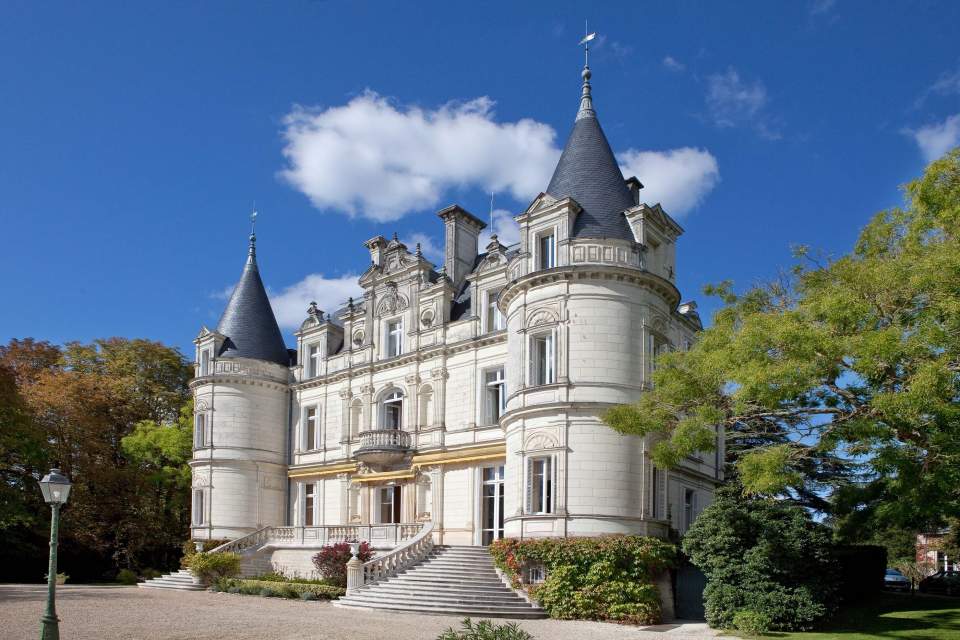 With
the outward appearance of a
white-turreted castle (not unexpected in the Loire
Valley), the hotel and
grounds occupy 37 acres on a hill overlooking the
Indre River (a tributary of
the Loire). Originally built in the 1880s, it was
purchased by the Olivéreau
family in the 1950s and converted into a hotel, now
run by Ami and Xavier
Olivéreau. Lodging is in the main chateau and
surrounding former staff quarters
and farmhouse. Each of the 36 room accommodations is
different, and we found
our air-conditioned suite, clean, spacious and well
decorated with antique
furniture, a
modern bathroom and shower
and well-functioning air conditioning.
With
the outward appearance of a
white-turreted castle (not unexpected in the Loire
Valley), the hotel and
grounds occupy 37 acres on a hill overlooking the
Indre River (a tributary of
the Loire). Originally built in the 1880s, it was
purchased by the Olivéreau
family in the 1950s and converted into a hotel, now
run by Ami and Xavier
Olivéreau. Lodging is in the main chateau and
surrounding former staff quarters
and farmhouse. Each of the 36 room accommodations is
different, and we found
our air-conditioned suite, clean, spacious and well
decorated with antique
furniture, a
modern bathroom and shower
and well-functioning air conditioning. In addition, the hotel boasts
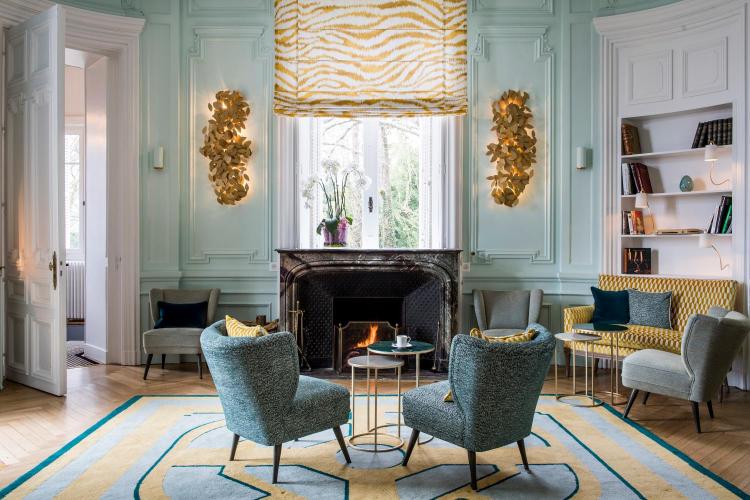 a heated
outdoor swimming pool, spa services, sauna, bike
rental and a small boat
available for rowing on the river—as well as
top-flight dining either inside in
“l’Orangérie Room,” or weather permitting, outside
on a terrace overlooking the
Indre River Valley.
a heated
outdoor swimming pool, spa services, sauna, bike
rental and a small boat
available for rowing on the river—as well as
top-flight dining either inside in
“l’Orangérie Room,” or weather permitting, outside
on a terrace overlooking the
Indre River Valley. The night we were there almost all guests ate outdoors, taking advantage of the not-too-warm, dry weather and magnificent view from the terrace of the scenic valley below, revealing other castles in the distance.
Our meal began with an amuse bouche of bite-size pieces of smoked duck with a heady mustard sauce. From a menu offering a wide range of excellent, artistically presented fare by chef David Chartier, we had starters of king prawns served as a tartar with coriander and creamy horseradish dressing accompanied by dabs of vegetable puree, and an order of a large poached lobster claw cut into bite-size pieces and accompanied by a white onion foam and thin strips of ginger.
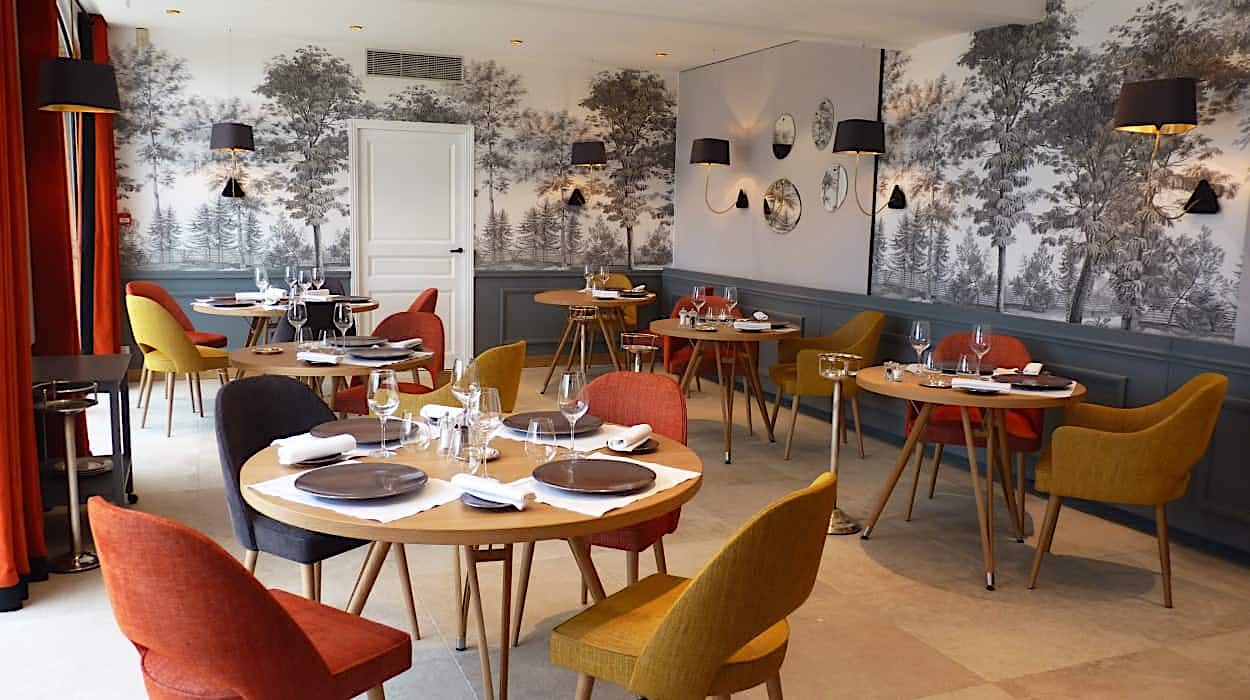 For
main courses we enjoyed a thick slice
of moist, dewy pollock atop a mound of kasha
enlivened by a tarragon puree and
capers, and an order of chunks of medium-rare veal
tenderloin, also accompanied
by kasha and local organic shiitake mushrooms, plus
a spinach coulis. Desserts
consisted of what was listed as “Raspberries,”
squares of a marshmallow-like
raspberry-flavored confection topped by fresh
raspberries and accompanied by
lychee sorbet, as well as an order of slices of
fresh nectarines each topped by
a mound of lime jelly.
For
main courses we enjoyed a thick slice
of moist, dewy pollock atop a mound of kasha
enlivened by a tarragon puree and
capers, and an order of chunks of medium-rare veal
tenderloin, also accompanied
by kasha and local organic shiitake mushrooms, plus
a spinach coulis. Desserts
consisted of what was listed as “Raspberries,”
squares of a marshmallow-like
raspberry-flavored confection topped by fresh
raspberries and accompanied by
lychee sorbet, as well as an order of slices of
fresh nectarines each topped by
a mound of lime jelly. We accompanied the appetizers and main courses with a bottle of a dry 2019 Domaine Vincent Carême Baumard “Les Clos” Vouvray, made from organic grapes grown on a limestone-laden hillside that showed a bouquet and dry taste of pears and apples with hints of vanilla in its long memorable finish. It mated perfectly with the fish as well as the veal. And with dessert we sipped a sweet, white 2021 Côteau du Layon that had a bouquet of honeysuckle and taste of ripe peaches. Service was timely and professional.
The cost of dinner for two was an extremely reasonable $215, including wine, tax and service.

Situated about 3 miles outside the bustling village of Saint Émilion is the restaurant L’Atelier de Candale in the quiet commune of Saint-Laurent-des-Combes, and if you happen to be nearby it’s a sensibly priced must for wonderful fare and top-flight wine served in a spacious room with large glass windows, or outdoors on a terrace, both with a relaxing, riveting view of vineyards and forest below.
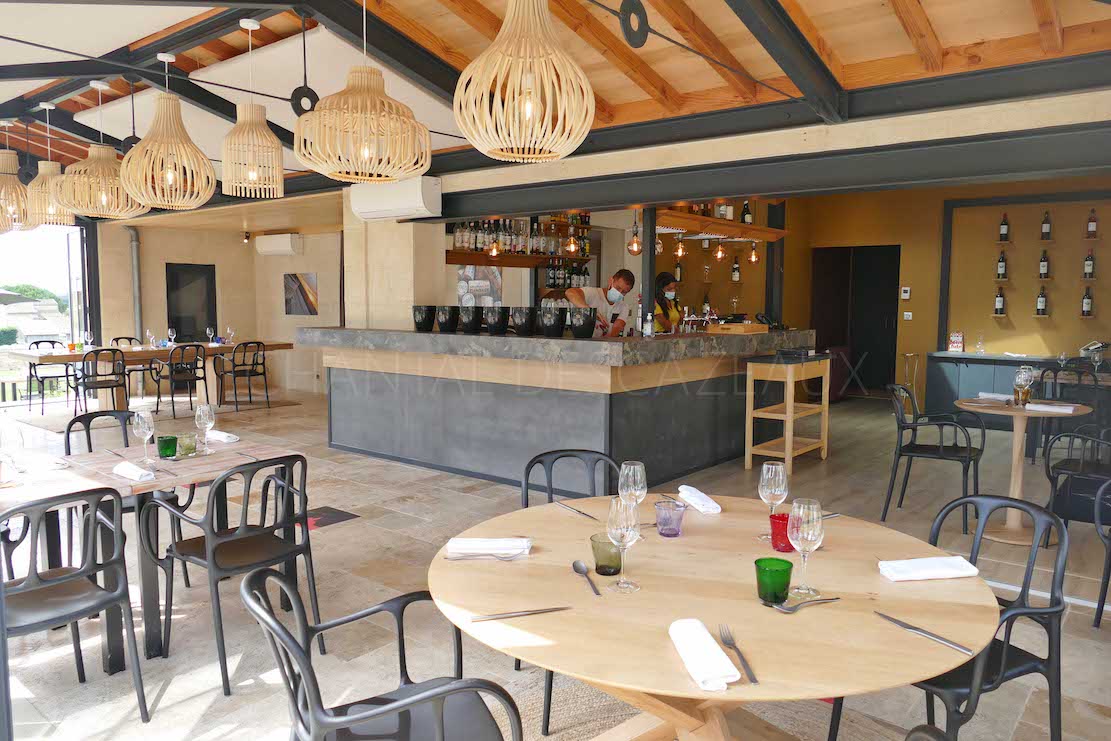 From
the “Menu Bistronomique” we chose as
appetizers a mound of soft, fresh burrata floating
in a rich thick tomato soup
and a beautifully presented carpaccio of beef,
strewn with fresh Italian herbs
and dabs of freshly made pesto. For main courses we
enjoyed a grilled whole sea
bass accompanied by a large slice of grilled
zucchini, strewn with pistachios
and cooked diced vegetables, all served with a tasty
green sauce. A tender cut
of Iberian pork mated with slightly cooked carrots
atop a sweet carrot puree
dressed with crispy fresh greens. Desserts consisted
of a citron mousse and
slices of hazelnut streusel coated with a layer of
pistachio cream and topped
by fresh raspberries.
From
the “Menu Bistronomique” we chose as
appetizers a mound of soft, fresh burrata floating
in a rich thick tomato soup
and a beautifully presented carpaccio of beef,
strewn with fresh Italian herbs
and dabs of freshly made pesto. For main courses we
enjoyed a grilled whole sea
bass accompanied by a large slice of grilled
zucchini, strewn with pistachios
and cooked diced vegetables, all served with a tasty
green sauce. A tender cut
of Iberian pork mated with slightly cooked carrots
atop a sweet carrot puree
dressed with crispy fresh greens. Desserts consisted
of a citron mousse and
slices of hazelnut streusel coated with a layer of
pistachio cream and topped
by fresh raspberries. For wine we selected a bottle 2010 Clos des Jacobins with a bouquet and flavors of ripe cherries and plums and a smooth, long-lasting finish. Service was professional and leisurely.
The cost for dinner for two was $190, including wine, tax and service.

He lives in Mount Kisco, NY
❖❖❖
PARMA NUOVA
1404
3rd Avenue
212-535-3520
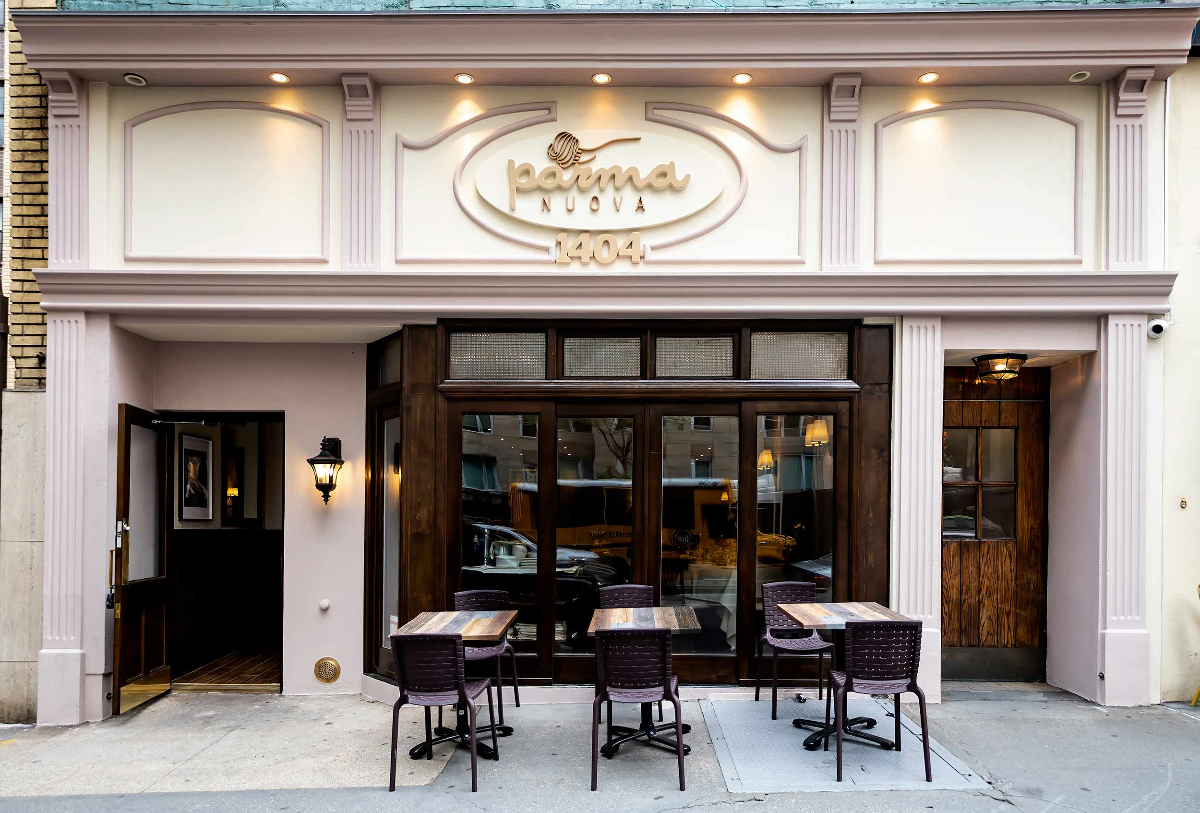
By John Mariani
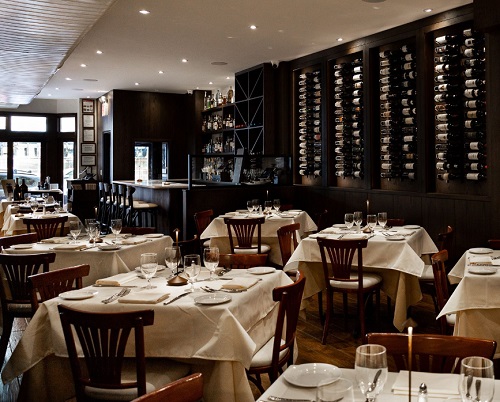 When this was Parma,
the menu was a mix
of formulaic Italian and Italian-American
dishes, but now Parma Nuova’s menu is
focused on the food of Parma and its surrounding
region of Emilia-Romagna. Of
course, Parma is famous for its
Parmigiano-Reggiano cheese and Prosciutto di
Parma, which are laced throughout the menu, as
well as hand-made, stuffed
pastas that are a specialty of the region.
When this was Parma,
the menu was a mix
of formulaic Italian and Italian-American
dishes, but now Parma Nuova’s menu is
focused on the food of Parma and its surrounding
region of Emilia-Romagna. Of
course, Parma is famous for its
Parmigiano-Reggiano cheese and Prosciutto di
Parma, which are laced throughout the menu, as
well as hand-made, stuffed
pastas that are a specialty of the region. As with other La Masseria Group restaurants, Parma Nuova is designed by Libby Langdon with strong black-and-white contrasts and vintage Italian posters and photos of the city of Parma. French doors open onto the street, and there’s a wall of wine. There are fine table settings with slender lamps and linens as befits the ambiance, which is centered by a huge display of flowers.
As at all the group’s restaurants, the welcome and service staff are as admirably amiable as they are well tuned. The wine list has about 80 selections, though it would be nice to have some wines from Emilia-Romagna, like a dry Lambrusco that goes well with the region’s rich food.
Among the antipasti is felino salame, a specialty of the region, rarely seen culatello and truffled pecorino served with tavolaccio di Parma con gnocco fritto, hot fried puffs of yeasty dough ($26). Colodonato perfected his fried zucchini ($15) years ago at La Masseria and now they are a signature item you won’t find better anywhere in the city. They have the added pleasure of a chickpea puree. The same delicate frying is accorded calamari and cauliflower ($24). Parma Nuova also has an outstanding, creamy, sweet eggplant Parmigiana style ($21.50) and all these appetizers may be enjoyed by two or more people.
Emilia-Romagna’s food is known for its richness, and you won’t easily find the region’s cappellacci all’Emiliana ($29.50), a large veal-stuffed type of tortellini with a mushroom ragu. Tonnarelli ($25.50) is given the cacio e pepe
 treatment,
but it is set into a crispy shell of Parmigiano
cheese that adds to the
lusciousness. Of course, there is gnocchi
(($32), lavished with a Parmigiano mousse
and shavings of black truffles.
(White ones will come in soon.)
treatment,
but it is set into a crispy shell of Parmigiano
cheese that adds to the
lusciousness. Of course, there is gnocchi
(($32), lavished with a Parmigiano mousse
and shavings of black truffles.
(White ones will come in soon.)If you are a risotto aficionado, you will applaud the unusual version done with arborio cooked in Champagne and set with pieces of roasted quail in a velvety reduction of red wine ($42).
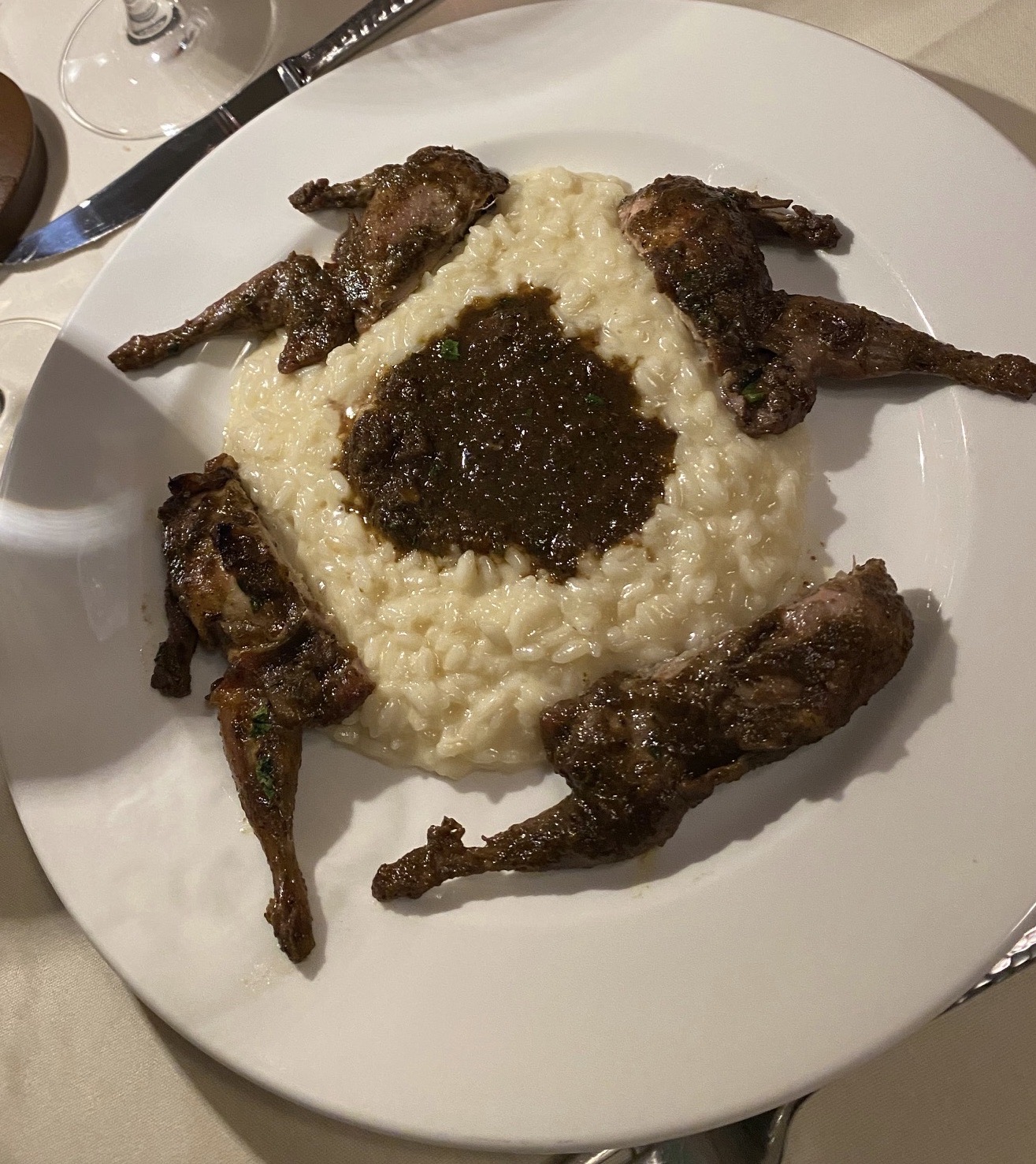 Entrees are simpler,
as they should be
after these rich beginnings. So, I recommend the
finely cooked fillet of
branzino in seasoned “crazy water” ($42). A
plump chicken is pressed on the
griddle and sliced with its juices ($35), while
their perfected veal alla
milanese with greens ($35), called
“elephant ear,” has a crispy thinness that
retains the true taste of the meat
within.
Entrees are simpler,
as they should be
after these rich beginnings. So, I recommend the
finely cooked fillet of
branzino in seasoned “crazy water” ($42). A
plump chicken is pressed on the
griddle and sliced with its juices ($35), while
their perfected veal alla
milanese with greens ($35), called
“elephant ear,” has a crispy thinness that
retains the true taste of the meat
within.All desserts ($13.50) are house-made, including a ricotta cheesecake with a decided vanilla edge; torta di Mamma Paola, a flourless chocolate
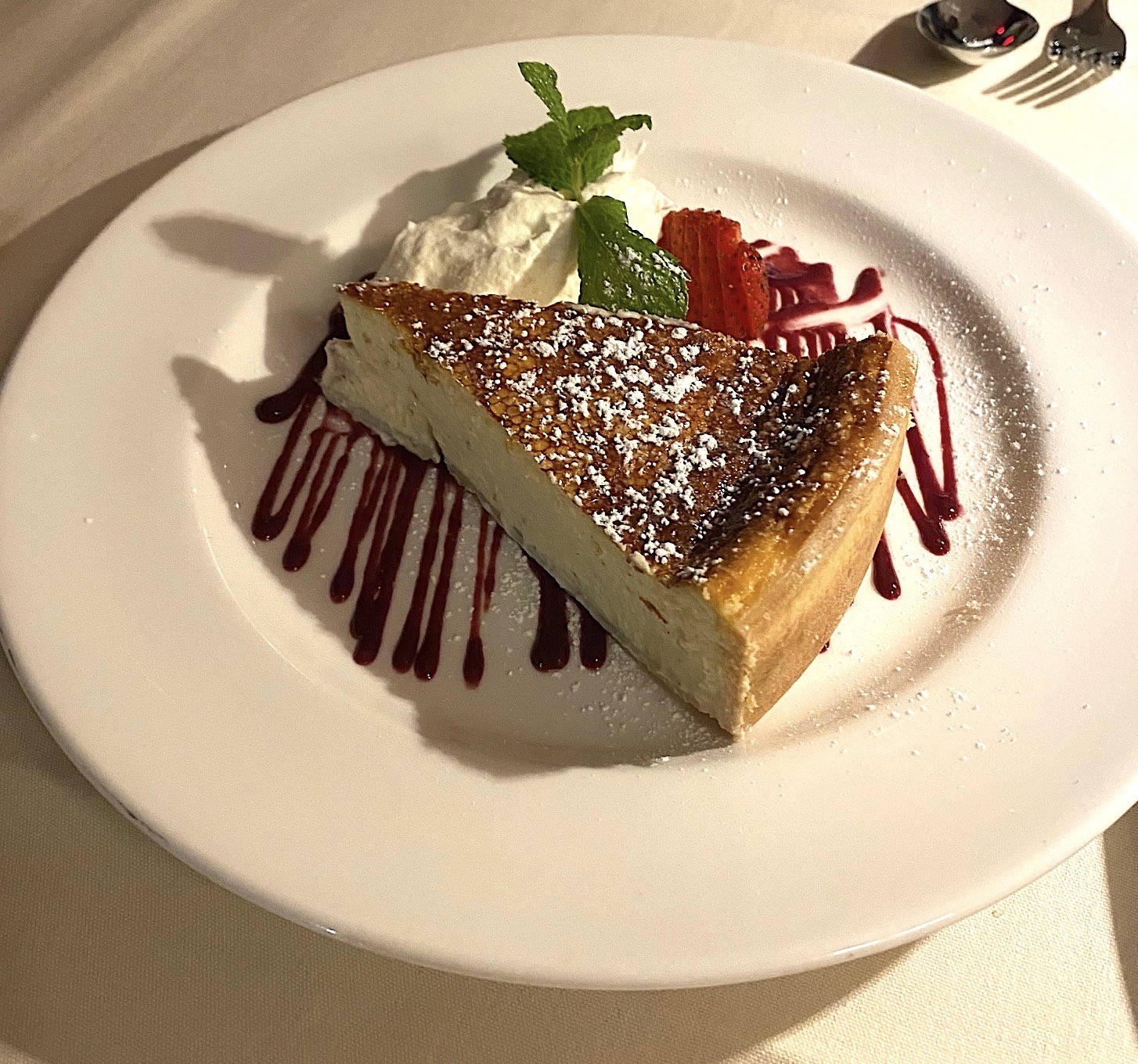 cake served with
vanilla ice cream inspired by Ruggiero’s
mother’s
recipe; a tiramisù
considerably
lighter than many other versions; and delizia
al limone, a lemon custard cream cake
topped with Chantilly cream.
cake served with
vanilla ice cream inspired by Ruggiero’s
mother’s
recipe; a tiramisù
considerably
lighter than many other versions; and delizia
al limone, a lemon custard cream cake
topped with Chantilly cream. The Upper East Side used to have a good number of Italian restaurants much beloved by the neighborhood’s affluent, if not always discerning, clientele. Some were trailblazers for Northern Italian cuisine, like Il Monello, Coco Pazzo and the still wonderful Sandro’s. But Parma Nuova is part of a new generation of regionally focused Italian ristoranti, led not by young acolytes with ten items on their storefront trattoria menus but by seasoned Italian professionals, whose decades of cooking and service make this a bellwether anywhere in New York.
Open for dinner nightly.
❖❖❖
ANOTHER VERMEER

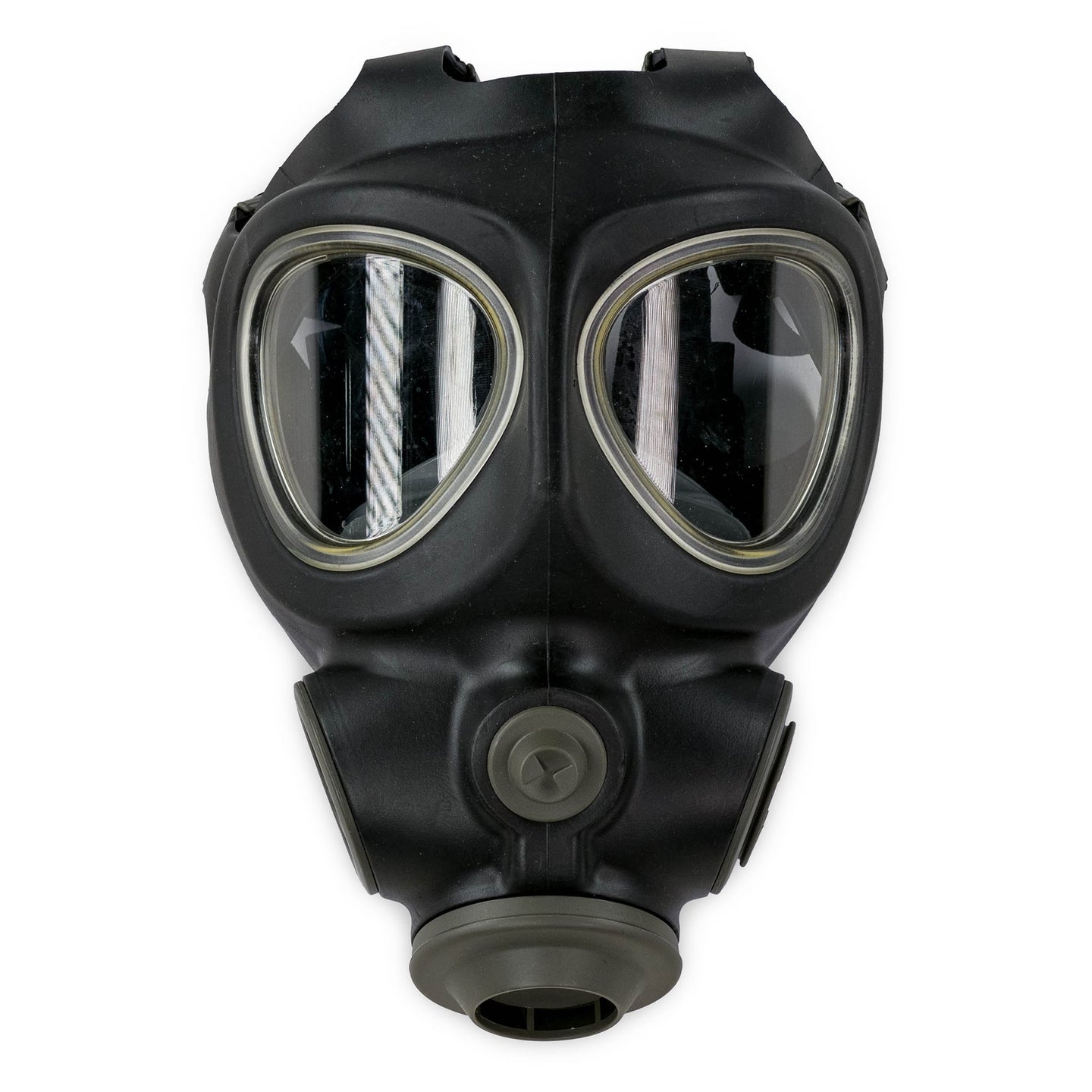 Neither Katie nor David needed a wake-up
call. At six-thirty-five both woke up suddenly to
the sounds of many loud
voices outside in the hallway, seemingly giving
orders. Katie threw on a robe
and David pulled on his jeans and a shirt.
Upon opening their doors they were brushed
aside by several men in white
ambulance suits—all of them wearing white air
masks—wheeling two gurneys
towards the elevators, not in a hurry, not as if
it were an emergency.
Neither Katie nor David needed a wake-up
call. At six-thirty-five both woke up suddenly to
the sounds of many loud
voices outside in the hallway, seemingly giving
orders. Katie threw on a robe
and David pulled on his jeans and a shirt.
Upon opening their doors they were brushed
aside by several men in white
ambulance suits—all of them wearing white air
masks—wheeling two gurneys
towards the elevators, not in a hurry, not as if
it were an emergency.Then Katie and David saw what looked like a platoon of Taiwanese policemen, also in white masks, one of whom was putting yellow police tape across the doors of the suite where the American couple was staying. Standing with plainclothes officers was the hotel’s general manager, Mr. Chou, speaking quickly but without hysteria.
Katie and David moved towards the passel of police and hotel staff—no other guests had come out of other rooms on the top floor—and approached Mr. Chou to ask what had happened.
“A terrible thing has occurred,” he said, wringing his hands. “The two people who were in this suite died during the night.”
“The two Americans?” asked Katie. “We met them just last night.”
“Yes, they were very nice people, celebrating their anniversary, and I gave them the suite I had offered to you as a gesture of hospitality. And now . . . they are both dead.”
“Do the police know what happened?” asked David, watching as one officer stretched duct tape between the two rooms’ doors that opened outward. Inside the sound of a machine was humming, like a fan.
“Please put these on,” said Mr. Chou, handing Katie and David air masks. “It seems that somehow there was a gas leak from the kitchenette that filled their rooms, and they just . . .”
David approached a senior plainclothes officer whom he’d heard speak English to Mr. Chou and identified himself as a former NYPD cop, which he could tell meant nothing to the Taipei investigator.
“Do you know what caused the gas leak, officer?” asked David, not knowing the man’s rank.
“No. Maybe the gas from the stove was not turned off all the way. There was a pot of coffee but no flame under it.”
David was sure he knew the answer to his next question but asked it anyway. “Is it possible it was a double suicide?”
The officer, behind his mask, looked disdainful. “We won’t discount anything, but I am told they were celebrating their fifth wedding anniversary. A happy couple. I do not think they were planning to commit suicide.”
“Yes, we met them last night, and they seemed very happy. They even invited us for breakfast in their suite this morning.”
“So you were inside their room?” asked the policeman. David knew that everyone within the vicinity of the room would be interrogated, especially if that person had been in the room before the deaths occurred. David also knew that the couple had no idea they’d be upgraded to the hotel’s best room, complete with a kitchenette. This was clearly no suicide.
“Is there the possibility they were murdered?” he asked.
The detective eyed David and said simply, “We will look at every possibility. At the moment we are regarding this as an unfortunate accident, a gas leak they could not smell while asleep. Now, sir, will you please excuse me? As you can understand, we have a great deal of work to do. I may have questions for you later.”
David returned to where Katie was speaking with Mr. Chou, who was distraught as much by the death of two guests as he was by the ramifications and the reputation of the hotel. As soon as the police arrived and found the room filled with gas, Mr. Chou was notified and told to have all gas lines in the building turned off and to check for leaks in the two other rooms that had kitchenettes, neither of them on the top floor.
“They were such very nice people,” he said. “So young. Too young to die like this.” He then told Katie and David, “Of course, I want to move you two immediately to another room on another floor after it’s been checked out by our engineer. If you will just get whatever you need to go downstairs, our staff will pack all your bags and belongings and meet you in the lobby. And I am so, so sorry about all this, especially when I think that it might have been the two of you staying in that room.”
Katie and David looked at each other, knowing the other’s thoughts: This had been no accident. It was murder and it was supposed to have been Katie Cavuto and David Greco carried out on those gurneys.
© John Mariani, 2016
❖❖❖
HUGH JOHNSON'S POCKET
WINE BOOK 2023:
An Interview with the New Editor
By John Mariani
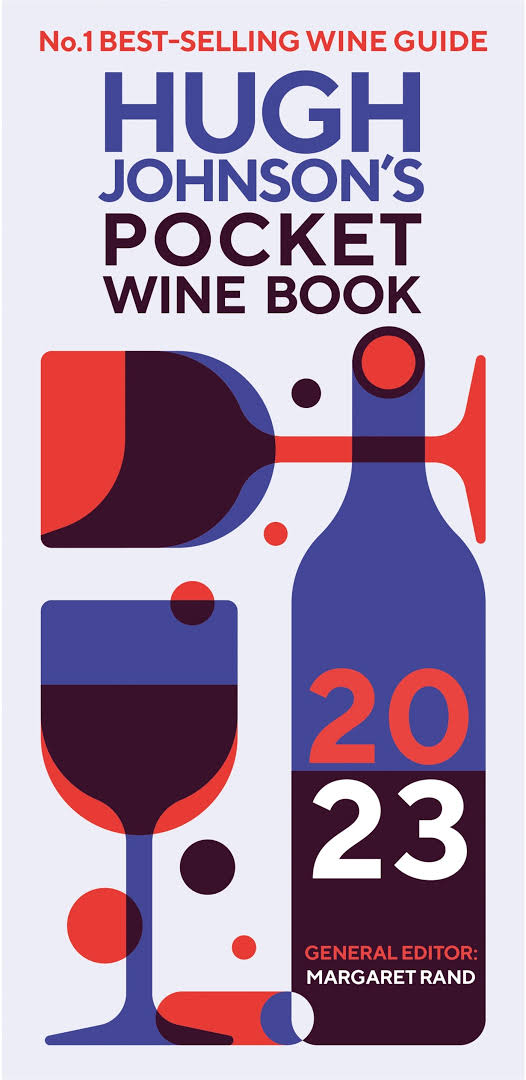
With Johnson’s retirement, his guide is in the best of hands: Margaret Rand is a veteran wine writer and author of Grapes & Vines and 101 Wines to Try Before You Die, and she shares Johnson’s down-to-earth, witty take on a subject that is taken far too seriously by others in the field. In this undertaking, Rand has the input of scores of experts in wine regions. “A lot has changed from the previous edition!,” she told me. “The supplement is completely new, as is the Agenda, the vintage report, and 10 Wines to Try in 2023. All the country chapters get a thorough update, with at least 25% of new copy—and I’m encouraging contributors to include more growers, and more new-wave growers—so a greater focus on artisanal producers and all that goes with them—sustainability, organic and biodynamic methods, and so on. We won’t ignore any section of the market, but that’s where I think the most interesting wines are to be found.” What I like most, however, are her introductory remarks, which she and her publisher (Mitchell Beazley) have given me permission to reprint part of here:
Wine
styles are changing. This is not some apocalyptic
warning –
just fact. Wine does not taste the way it used to.
Is this good or bad? It’s certainly riper. New
drinkers, coming to
red Bordeaux or burgundy without preconceptions,
might prefer this new opulent
style. Older
drinkers might regret a certain loss of
tension. But it is
what it is. Good growers are adapting,
and whereas in
the past they focused their
viticulture on producing
maximum ripeness, now high levels of ripeness
are almost a given.
The next stage, and sometimes the current stage,
is over
ripeness: too much opulence, not enough
acidity. So, growers
have changed their focus to acidity,
or freshness,
or extending the ripening period. It
can be done—for a
while, anyway. Perhaps in
the future the great wines will not
be, as they have
been for a few lifetimes now, the
ripest in years; perhaps the
greatest terroirs will not be those
that deliver
more reliable ripeness. Ripeness can be
too much of a good
thing. Different terroirs are already
coming into their
own.
We’ve started with France, so let’s have the
good news. Loire
Chenin, for a long time a challenging
proposition in youth, has
moved into its comfort zone. It’s in
a sweet spot now for
ripeness, acidity and balance. How long
will it stay there?
Maybe a decade, according to some
estimates, if the world keeps
getting warmer. Côte d’Or
burgundy, in most years now, tastes
far more opulent than
it used to. St-Émilion can
sometimes be reminiscent
of Tuscany’s Maremma, with floral
and balsamic notes. Barolo is
more approachable than ever before,
partly because of better tannin
management, but also because those
tannins are riper. German Riesling?
Making classic light Kabinett is a
problem now, but dry wines are
better than ever. NV Champagne,
blended to consistency year in
year out, is gradually giving way to NV
blends that are more reflective
of change, with ups and downs of
style being promoted as a virtue
rather than hidden away in the blending
room. English wines are having
the time of their lives—though not so
much in frost-hit, rainy 2021.
Greater ripeness has implications for when we
drink wine, and for how
long we cellar it. The most obvious
change is that we don’t need to
keep wine as long. The 2018
St-Émilions—not the top Grands Crus
Classés, but the good Grands Crus—were
often drinking well at three
years old. The 2017 Left Bank Crus
Classés, at four years old,
however, were sleek but closed. In the
Supplement this year we explore the
whys and wherefores of how wines
age—and indeed whether we
should care as much about such things
as we used to.
Scattered
throughout the book you’ll find boxes
on The New Fine Wines, in
which the book’s contributors put
together their own lists of outstanding
examples that break with tradition
and will make you sit up and take
notice – for all the right reasons.
. . .
Most of us
don’t want to buy wines at the
highest price points, and can’t
afford to. Moves away from a uniform
international style have opened up
the world to us. There are superb
wines—original, subtle, thoughtful—from
everywhere. Lift your eyes from
the classic regions and you’ll
find them. But these
new wines have also multiplied the
confusion. Instead of just
remembering a few grape varieties and a few
regions, we need to be more
aware of the names of producers, and
it helps if we have some
awareness of different techniques, to help
us remember styles we might
like and styles we might not. There are
pitfalls: not all winemakers
are brilliant, and just being
minimum-intervention and right-on
doesn’t automatically mean good. The
aim of this book is to guide you
through—with pointers, definitions and
opinions. We are
increasingly focusing on producers rather
than regions because we
believe that that is what matters
most now. Regional styles have an
influence, of course, but it’s the name
of the producer that distinguishes
the best from the mediocre. There
is still mediocrity to be found
in wine; this book aims to help you
bypass it in favour of the
interesting, the fun, the distinguished.
. . .
It reminds
us that there are a great many ways
to spend money in wine, and a
great many different definitions of
value. Presumably those
buyers of Barolo barrels will regard their
NFT as added value. At the
opposite end of the scale, “value” is a
synonym for cheap: wine bought
and sold at the lowest possible
price. It reminds me of a supermarket
wine buyer who described one of her
“value” purchases thus:
“Well, it won’t kill you.”
We hope to do better than that.
 WHY
THERE'LL ALWAYS
WHY
THERE'LL ALWAYS BE AN ENGLAND
❖❖❖
Any of John Mariani's books below may be ordered from amazon.com.
 The Hound in Heaven
(21st Century Lion Books) is a novella, and
for anyone who loves dogs, Christmas, romance,
inspiration, even the supernatural, I hope you'll find
this to be a treasured favorite. The story
concerns how, after a New England teacher, his wife and
their two daughters adopt a stray puppy found in their
barn in northern Maine, their lives seem full of promise.
But when tragedy strikes, their wonderful dog Lazarus and
the spirit of Christmas are the only things that may bring
his master back from the edge of despair.
The Hound in Heaven
(21st Century Lion Books) is a novella, and
for anyone who loves dogs, Christmas, romance,
inspiration, even the supernatural, I hope you'll find
this to be a treasured favorite. The story
concerns how, after a New England teacher, his wife and
their two daughters adopt a stray puppy found in their
barn in northern Maine, their lives seem full of promise.
But when tragedy strikes, their wonderful dog Lazarus and
the spirit of Christmas are the only things that may bring
his master back from the edge of despair. WATCH THE VIDEO!
“What a huge surprise turn this story took! I was completely stunned! I truly enjoyed this book and its message.” – Actress Ali MacGraw
“He had me at Page One. The amount of heart, human insight, soul searching, and deft literary strength that John Mariani pours into this airtight novella is vertigo-inducing. Perhaps ‘wow’ would be the best comment.” – James Dalessandro, author of Bohemian Heart and 1906.
“John Mariani’s Hound in Heaven starts with a well-painted portrayal of an American family, along with the requisite dog. A surprise event flips the action of the novel and captures us for a voyage leading to a hopeful and heart-warming message. A page turning, one sitting read, it’s the perfect antidote for the winter and promotion of holiday celebration.” – Ann Pearlman, author of The Christmas Cookie Club and A Gift for my Sister.
“John Mariani’s concise, achingly beautiful novella pulls a literary rabbit out of a hat – a mash-up of the cosmic and the intimate, the tragic and the heart-warming – a Christmas tale for all ages, and all faiths. Read it to your children, read it to yourself… but read it. Early and often. Highly recommended.” – Jay Bonansinga, New York Times bestselling author of Pinkerton’s War, The Sinking of The Eastland, and The Walking Dead: The Road To Woodbury.
“Amazing things happen when you open your heart to an animal. The Hound in Heaven delivers a powerful story of healing that is forged in the spiritual relationship between a man and his best friend. The book brings a message of hope that can enrich our images of family, love, and loss.” – Dr. Barbara Royal, author of The Royal Treatment.
 |
The Encyclopedia of American Food and Drink by John F. Mariani (Bloomsbury USA, $35) Modesty forbids me to praise my own new book, but let me proudly say that it is an extensive revision of the 4th edition that appeared more than a decade ago, before locavores, molecular cuisine, modernist cuisine, the Food Network and so much more, now included. Word origins have been completely updated, as have per capita consumption and production stats. Most important, for the first time since publication in the 1980s, the book includes more than 100 biographies of Americans who have changed the way we cook, eat and drink -- from Fannie Farmer and Julia Child to Robert Mondavi and Thomas Keller. "This book is amazing! It has entries for everything from `abalone' to `zwieback,' plus more than 500 recipes for classic American dishes and drinks."--Devra First, The Boston Globe. "Much needed in any kitchen library."--Bon Appetit. |
"Eating Italian will never be the same after reading John Mariani's entertaining and savory gastronomical history of the cuisine of Italy and how it won over appetites worldwide. . . . This book is such a tasteful narrative that it will literally make you hungry for Italian food and arouse your appetite for gastronomical history."--Don Oldenburg, USA Today. "Italian
restaurants--some good, some glitzy--far
outnumber their French rivals. Many of
these establishments are zestfully described
in How Italian Food Conquered the World, an
entertaining and fact-filled chronicle by
food-and-wine correspondent John F.
Mariani."--Aram Bakshian Jr., Wall Street
Journal.
"Equal parts
history, sociology, gastronomy, and just
plain fun, How Italian Food Conquered the
World tells the captivating and delicious
story of the (let's face it) everybody's
favorite cuisine with clarity, verve and
more than one surprise."--Colman Andrews,
editorial director of The Daily
Meal.com. "A fantastic and fascinating
read, covering everything from the influence
of Venice's spice trade to the impact of
Italian immigrants in America and the
evolution of alta cucina. This book will
serve as a terrific resource to anyone
interested in the real story of Italian
food."--Mary Ann Esposito, host of PBS-TV's
Ciao
Italia. "John Mariani has written the
definitive history of how Italians won their
way into our hearts, minds, and
stomachs. It's a story of pleasure over
pomp and taste over technique."--Danny Meyer,
owner of NYC restaurants Union Square
Cafe, The Modern, and Maialino.
|
 |
 |
 |
 |
 |
 |
 Everett Potter's Travel Report:
Everett Potter's Travel Report: 
 Eating Las
Vegas
Eating Las
Vegas
MARIANI'S VIRTUAL GOURMET
NEWSLETTER is published weekly. Publisher: John Mariani. Editor: Walter Bagley. Contributing Writers: Christopher
Mariani, Misha Mariani, John A. Curtas, Gerry Dawes, Geoff Kalish.
Contributing
Photographer: Galina Dargery. Technical
Advisor: Gerry
McLoughlin.
If you wish to subscribe to this
newsletter, please click here: http://www.johnmariani.com/subscribe/index.html
© copyright John Mariani 2022
